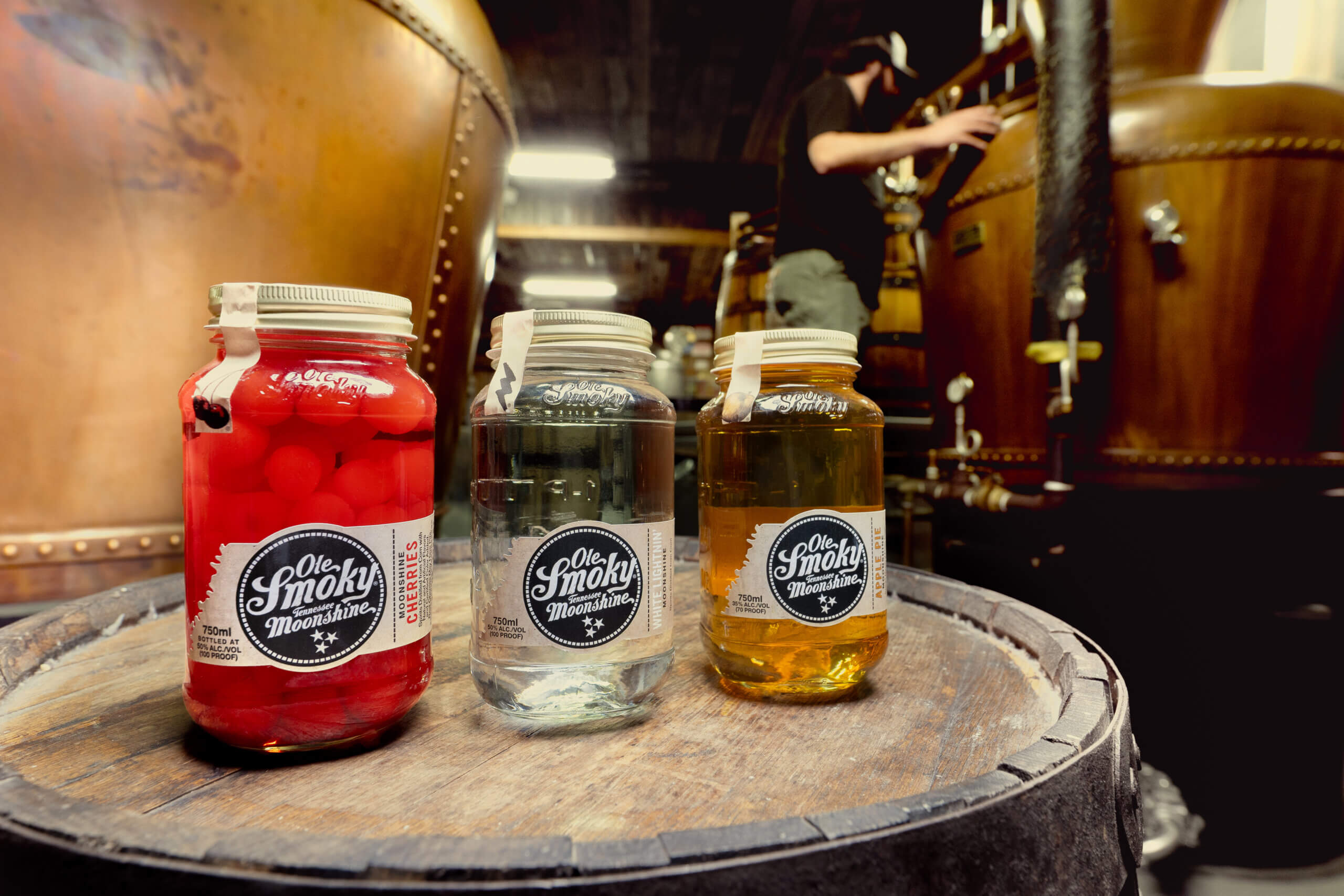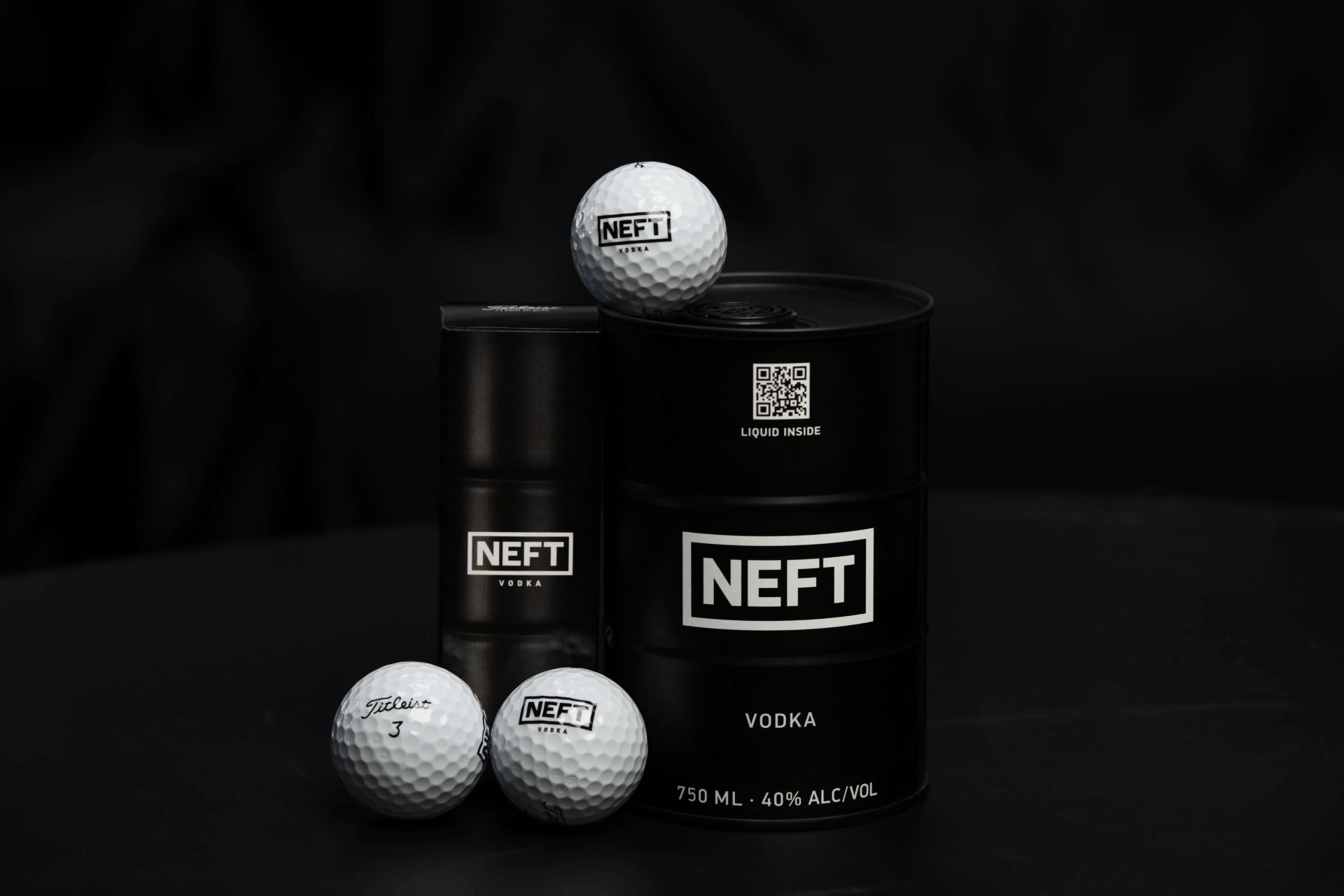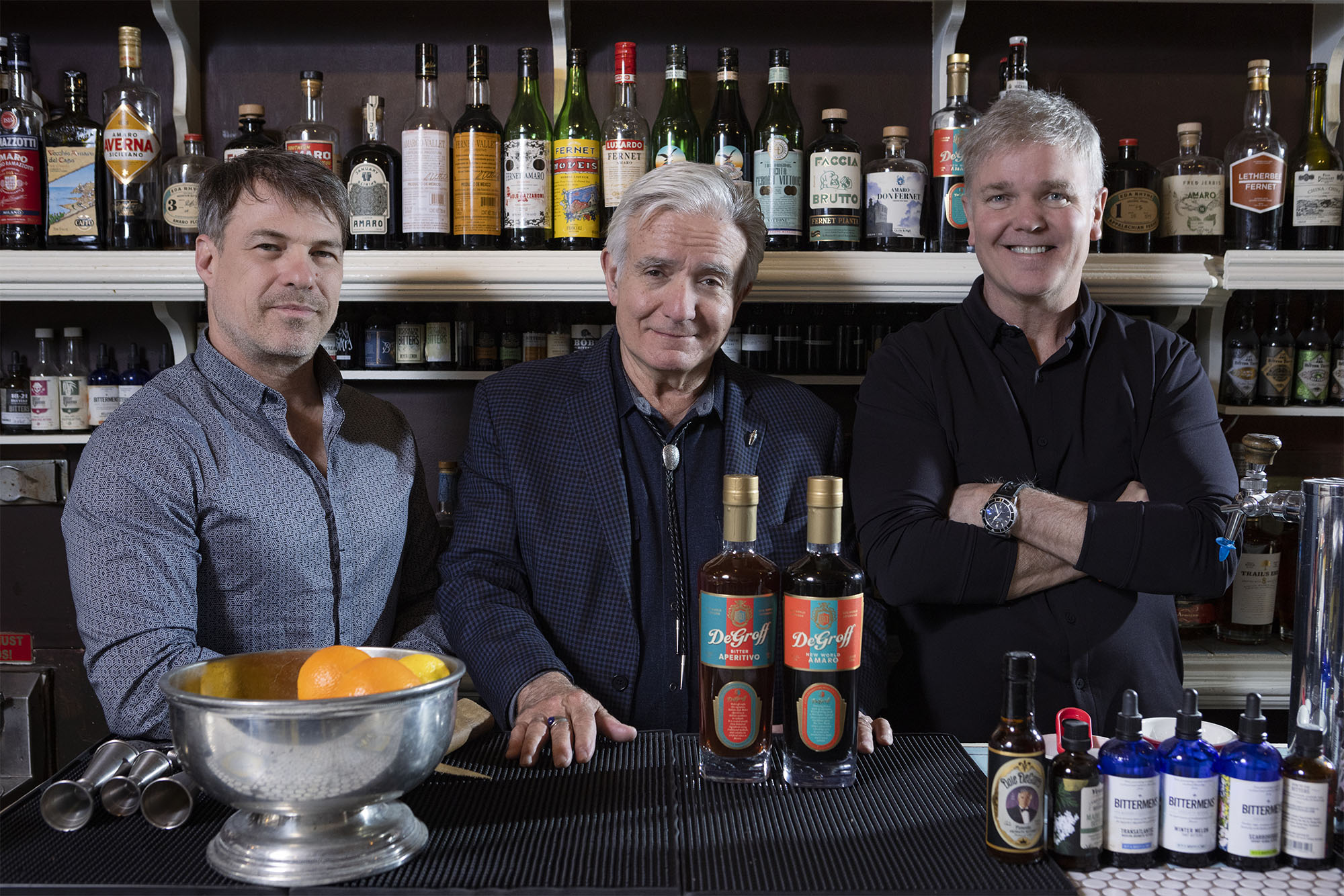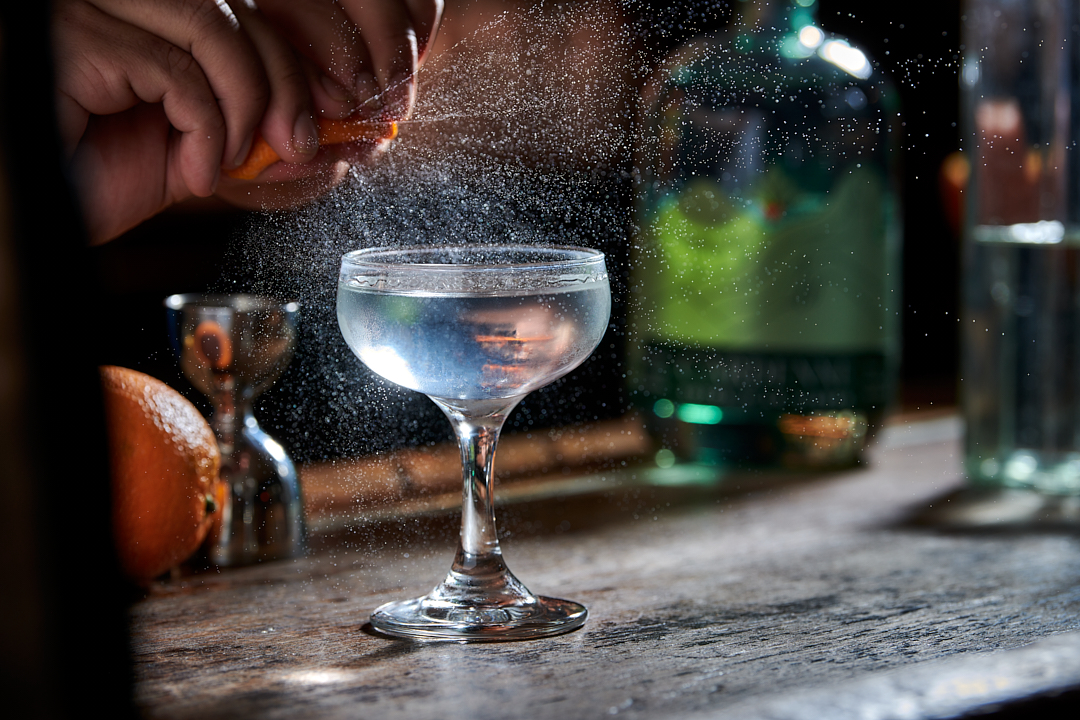Starka: Bridging the Gap Between Vodka and Whiskey
By Lance Mayhew
Four craft distillers are giving this rudimentary 15th century white spirit a distinctly American twist.
The men worked hard, the cool damp earth falling steadily from the blades of their shovels as they dug the hole for the oak wine barrel. To the side, a pot of melted beeswax bubbled over an open fire, a brush inside, ready to paint the hot wax over the staves of the barrel to seal it from the elements during its rest in the ground. Eventually, the hole was ready, and the freshly waxed barrel was rolled into it. Rough vodka, double distilled from rye in the village, was poured into the barrel. This rudimentary, barrel-aged spirit is known as starka.
As the process continued, one man stepped down next to the barrel, thrust a handful of apple leaves, some lime leaves and plum blossoms, and a few pears and apples through the bunghole before closing the barrel and sealing the bung with a final treatment of beeswax. Then the barrel was buried. This barrel was a celebration, put into the ground to celebrate the birth of a child, only to be dug up and opened upon the celebration of that child’s wedding.
Starka originated in the 15th century in what is now Poland, Lithuania, and western Russia. All of the latter countries are renowned for white spirits, vodka being the most famous. However, these countries also produce a variety of un-aged fruit brandies. There is no whiskey tradition in this part of the world; starka is as close as it gets. These vodkas would have been aged anywhere from 10 years all the way to 50 years and more, and often had wine or cognac added. The barrel character combines with the neutrality of the base spirit to produce what Bull Run Distilling Company co-founder Patrick Bernards describes as “the bridge spirit… taking people from vodka to whiskey.”
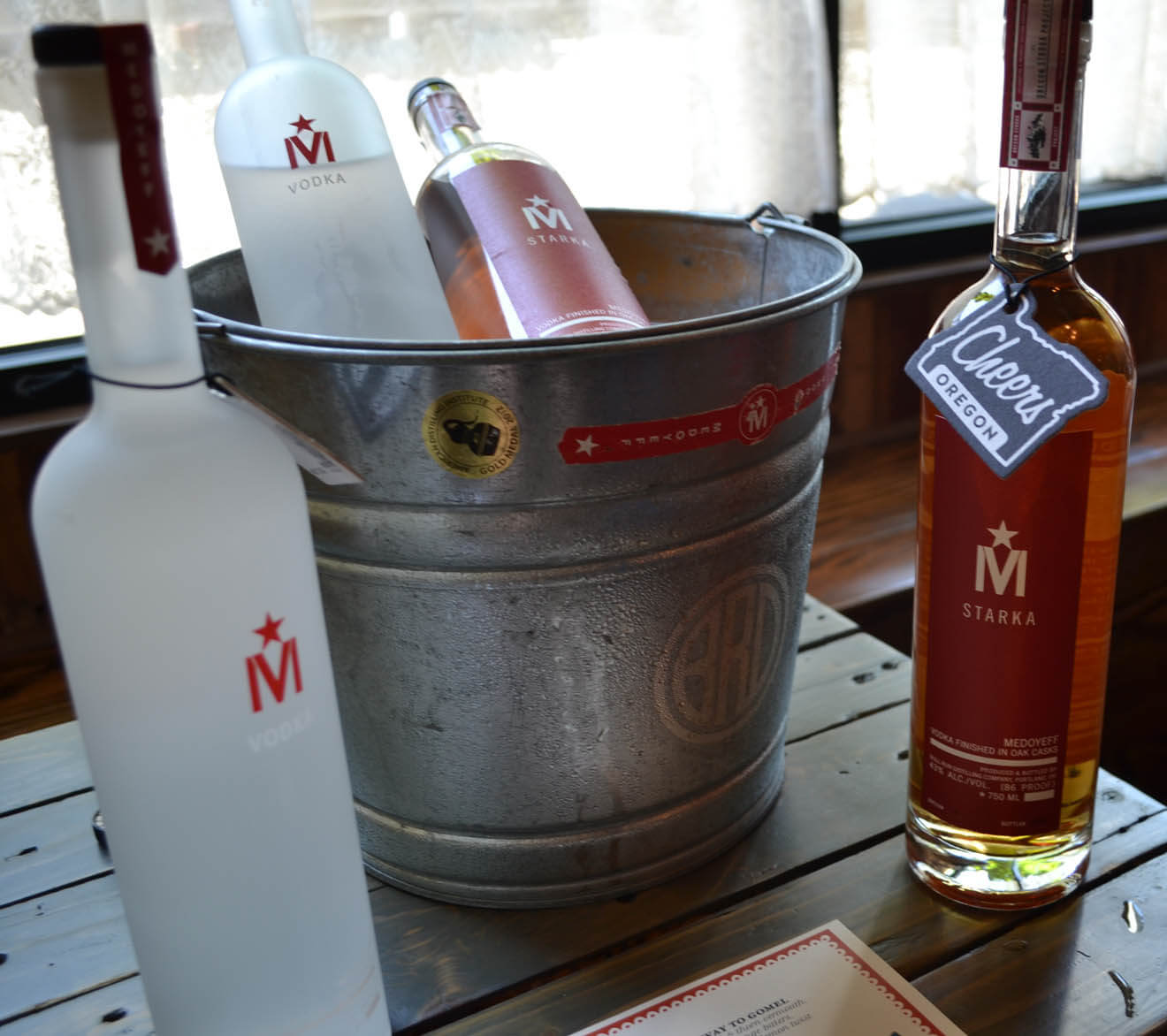
Bull Run Starka
Now, a new style of this barrel-aged vodka has been born, thanks to an enterprising group of four craft distillers in America. The new American style of starka focuses on the wood character that each barrel imparts to the spirit, and each distiller has a unique take on which woods work best. These mavericks eschew tradition, going without fruit or other additives, and focusing their sights on shorter maturation times to create a distinctly American take on this Baltic spirit. With one company located in Saint Louis, and three in Oregon, these distillers may seem like an unlikely group to create a new spirits category, and yet, that may be exactly what is happening as these evangelists of starka spread their gospel across the United States.
Ultimately, the story of starka in the U.S. begins in St. Louis in 2012. Greg Deters and his partners at St. Louis Distilling set out to make the first starka in America after researching the recipes and history of starka during trips to Europe. The result was Cardinal Sin starka, distilled from a mash of two-row malted barley and corn. The bottling was released in 2014 after six months of aging.

Cardinal Sin with a Barrel
Some of their early starka experiments used traditional additives, but, as Deter notes, “Ultimately, we chose not to add anything. We liked the sweetness of the malted barley with the balance of the barrels.” The starka is matured in a combination of air-dried and kiln-dried new American oak barrels sourced from a local Missouri cooperage. Both sets of barrels get a medium, number three char to impart flavor but not penetrate too deeply into the wood. According to Deters, his team “felt it added a little more punchiness to the spirit when we blended the barrels, and that is what felt good to us.”

Cardinal Sin Starka and Vodka
The result, like all the American starkas, is a spirit with barrel character , but one that is also exceptionally smooth and mixable. Deters noted that innovation from the craft brewing sector, where consumers have come to respect and admire experimentation, was a catalyst in creating their uniquely American version of starka.
“People look for craft beers that are unique and different, and craft distillers have been a little hamstrung,” explains Deters.
“If we get people thinking about new things, then that is a good thing for the overall industry. We feel like we have a responsibility to push the envelope a little bit.”
While the traditional way of consuming starka is a chilled shot, usually accompanied by zakuski, the Baltic appetizer spread of cured meats, sardines, pickled vegetables and hard cheeses, Deter’s preferred way to enjoy starka is simply as a sipping vodka, whether on the rocks or neat.
In Oregon in 2014, a conversation Lee Medoff had with two local distillers resulted in all three creating unique versions of starka. As Bull Run’s distiller, Medoff had become interested in starka during trips to Russia to explore his Russian heritage. During a recent event at Portland’s trendy Russian restaurant Kachka, Medoff poured chilled shots of his Medoyeff starka, insisting that a friend do a shot with us, as the number three is considered lucky in Russian culture.
Freezing cold, the starka goes down effortlessly, and it isn’t until the exhale that I catch the flavor of the spirit itself. It is slightly creamy, with a definite influence from the oak. Vanilla, baking spices, a touch of white pepper, and just a hint of flavor from the used Oregon pinot noir barrels and rye whiskey casks the starka has matured in are evident; this spirit manages to be both flavorful and ethereal at the same time. I pop one of the zakuski into my mouth, then a hard cheese of some sort, and my palate is ready for another shot.
According to Medoff’s partner, Patrick Bernards, Medoyeff starka is not a one-time release for their company. As bartenders in Portland and around Oregon have begun to discover starka, they have started to mix it into Old Fashioneds, Sazeracs, and original creations. “Bartenders love starka because it’s so versatile,” explains Bernards.
“At first, many are confused about what to do with it, but as they play with the spirit they realize it works well as a replacement for many rum, lighter whiskey, and vodka cocktails.”
Across town, Indio Spirits has its own take on starka. Best known for its Snake River Stampede Canadian whiskey and its namesake flavored vodkas, distiller John Ufford went in a different direction with Indio’s version. He used charred oak barrels that had previously held Indio’s James Oliver rye whiskey, a whiskey that is distilled in Indiana and then matured in Oregon. French oak and apple wood staves add a unique flavor profile to the starka along with the rye whiskey notes imparted by the previous occupant of the casks.

Big Bottom Starka
At the final Oregon distiller, Hillsboro’s Big Bottom Distilling, Ted Pappas sees starka as an opportunity to experiment even further with wood finishes. This year’s offering of starka was matured in casks that had previously held zinfandel wine for five years, before being used twice to finish Big Bottom’s bourbon. The result is a light spirit with an underlying depth of flavor, with hints of soft oak, a classic zinfandel wine jam note, and a vanilla/caramel note imbued by the bourbon. Next year’s starka will be even more exotic, combining three wine barrels that had previously held Rhone varietals (the most common Rhone varietals being syrah, grenache, and mourvedre), with one that had previously held a ruby port.
“I think it’s something whiskey drinkers will enjoy because it has flavor,” observes Pappas, also noting that bartenders “like the uniqueness that it can bring to a cocktail.”
Every trend starts small, with a few strong-willed people persevering to show the world that their way, their product, and ultimately, their vision is worth noting. While American starka is in its infancy, these four bold craft distillers have pioneered a way forward, while still staying true to starka’s eastern European roots. As bartenders and consumers begin to discover starka, a new appreciation for this forgotten spirit and its unique place in spirits will come. Until then, cutting edge distillers like St. Louis Distillery, Bull Run Distilling Company, Indio Spirits, and Big Bottom Distilling, will continue to resurrect forgotten spirits and give them a modern American flair.




